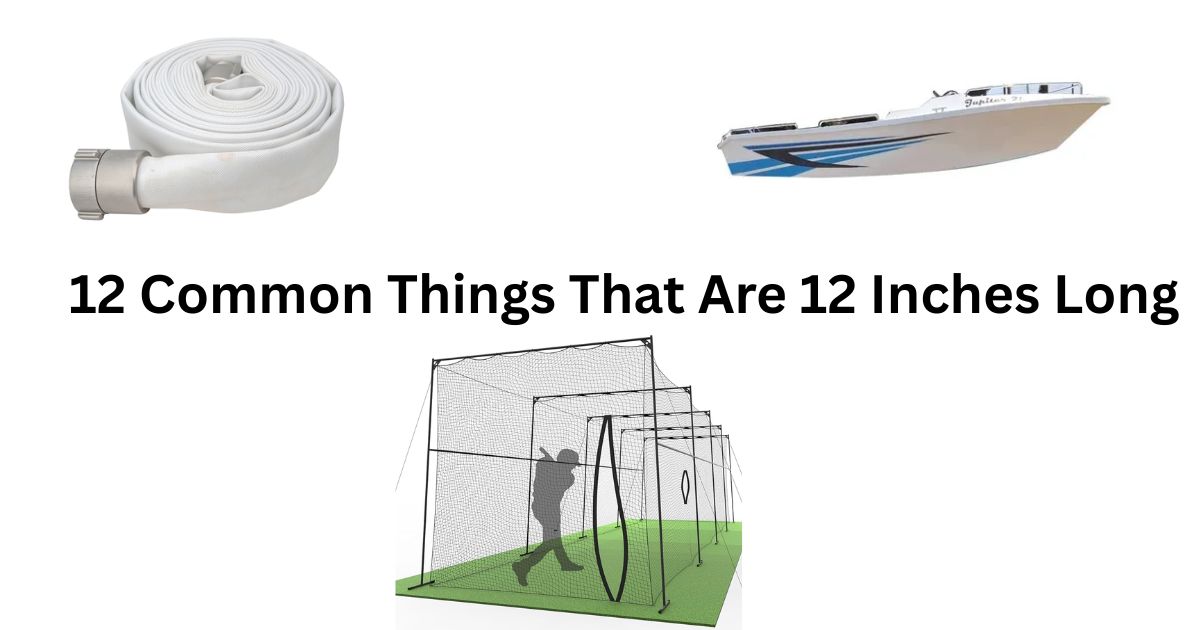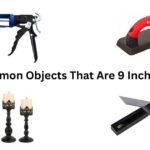Have you ever looked at a space in your yard and wondered, “Is that about 50 feet?” Maybe you’re planning a new fence, checking if a boat will fit in your driveway, or just trying to picture a distance you read about online. Understanding what 50 feet really looks like can make those everyday decisions so much easier.
I’ve measured plenty of spaces while working on small home projects, and I’ve learned that being able to see 50 feet in your mind saves time, money, and a lot of guesswork. Once you get a real feel for this length, you’ll start noticing it everywhere — from the width of a neighborhood street to the size of a fire truck.
In this guide, you’ll find easy comparisons, quick conversions, and 11 real-world examples of things that are exactly 50 feet long. Whether you’re a student, a DIYer, or just curious about the world around you, this article will help you understand and picture 50 feet like a pro.
Quick Answer: How Long is 50 Feet?
50 feet equals 15.24 meters, 600 inches, or 16.67 yards. In practical terms? Walk at your normal pace for about 11 seconds. That’s 50 feet. Or picture five mid-sized cars parked end-to-end. It’s also roughly half the length of a basketball court.
Here’s what matters: this isn’t a distance you cross in two steps. It’s substantial enough to require planning when you’re working with construction materials, installing equipment, or designing outdoor spaces. I’ve noticed that once people start thinking in measurements like this, they waste less time guessing and get better results with their projects.
Conversion Table: 50 Feet in Other Units
| Unit | Value |
| Inches | 600 in |
| Centimeters | 1,524 cm |
| Millimeters | 15,240 mm |
| Meters | 15.24 m |
| Yards | 16.67 yd |
| Kilometers | 0.015 km |
11 Common Things That Are 50 Feet Long
| Object | Category | Measurement/Dimension |
| Large Railroad Boxcar | Transportation/Freight | Interior cargo length: 50 ft (exterior: 55-60 ft) |
| Fire Truck (Aerial Ladder) | Emergency Vehicle | Overall length: 40-50 ft |
| Fire Hose (Standard Section) | Emergency Equipment | Single section length: 50 ft |
| Coast Guard Patrol Boat | Maritime Vessel | Defender-class length: ~50 ft |
| Small Commercial Fishing Trawler | Maritime Vessel | Bow-to-stern length: ~50 ft |
| Helicopter Rotor | Aircraft Component | Sikorsky S-61 rotor diameter: ~50 ft |
| Outdoor Movie Screen | Entertainment | Screen width: 50+ ft |
| Residential Street | Infrastructure | Curb-to-curb width: ~50 ft (two-lane) |
| Shallow Well | Utility/Water Source | Drilling depth: ~50 ft |
| Indoor Batting Cage | Sports Equipment | Net system length: 50 ft |
| Small Retail Store | Commercial Building | Front-to-back depth: 50 ft (strip mall unit) |
1. Large Railroad Boxcar
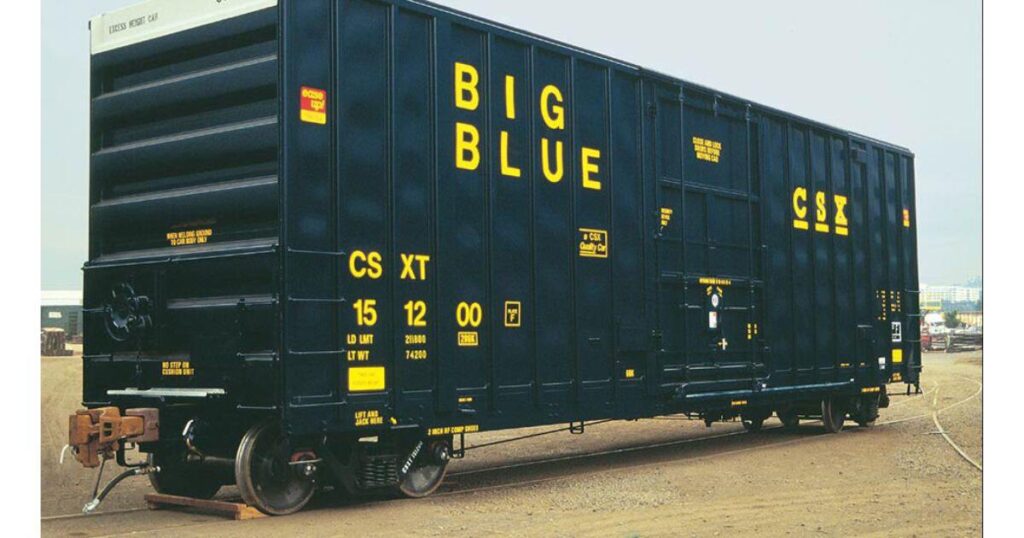
Railroad boxcars—those massive rectangular containers hauling freight across the country—have an interior cargo space of 50 feet. The outside dimensions run slightly longer at 55 to 60 feet because of the walls and coupling mechanisms, but the usable interior where goods are stacked measures exactly 50 feet.
They haul everything you can imagine—cars, grain, even entire shipping crates packed tight. The 50-foot interior became an industry standard, as noted by the Trains, because it balances cargo capacity with weight distribution on rail tracks. Larger specialized boxcars exist with 60-foot interiors, but the 50-footer remains the most common size rolling through rail yards.
Watch a freight train pass by. One complete boxcar from coupling to coupling gives you a perfect real-world reference for this measurement.
2. Fire Truck
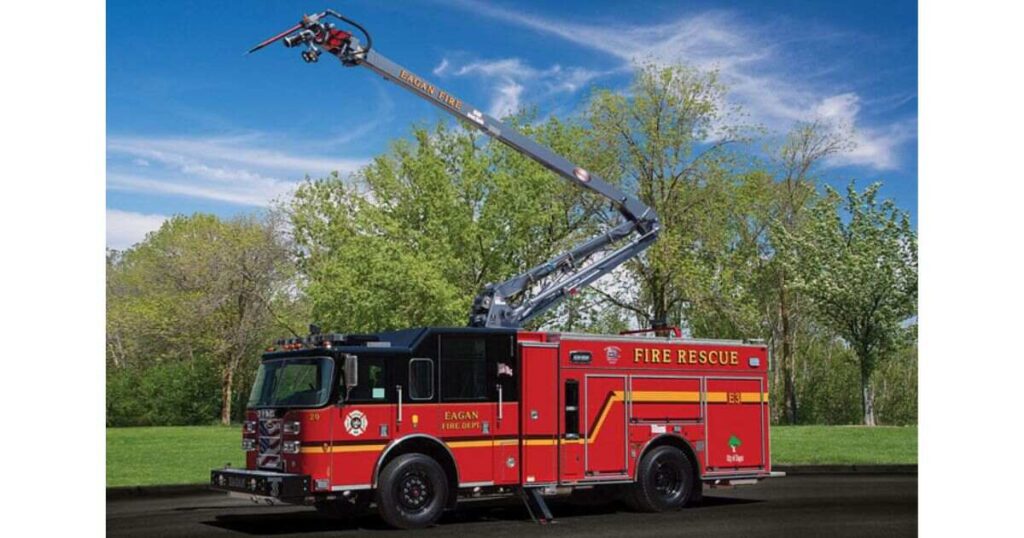
Aerial ladder trucks—the ones firefighters use to reach upper floors of burning buildings—typically measure between 40 and 50 feet long. These aren’t compact pumper engines. We’re talking about the extended-cab models with massive ladder assemblies mounted on top.
The length accommodates the cab, water tank, pump system, ladder mechanism, equipment storage, and stabilizing outriggers. Articulated fire trucks (the ones that bend in the middle for tighter turns) can stretch even longer, but standard large apparatus sits right at this 50-foot mark.
The US Coast Guard’s Defender-class boats span approximately 50 feet bow to stern. These high-speed patrol craft zip through harbors, rivers, and coastal waters responding to emergencies and enforcing maritime security.
3. Fire Hose (Standard Section)
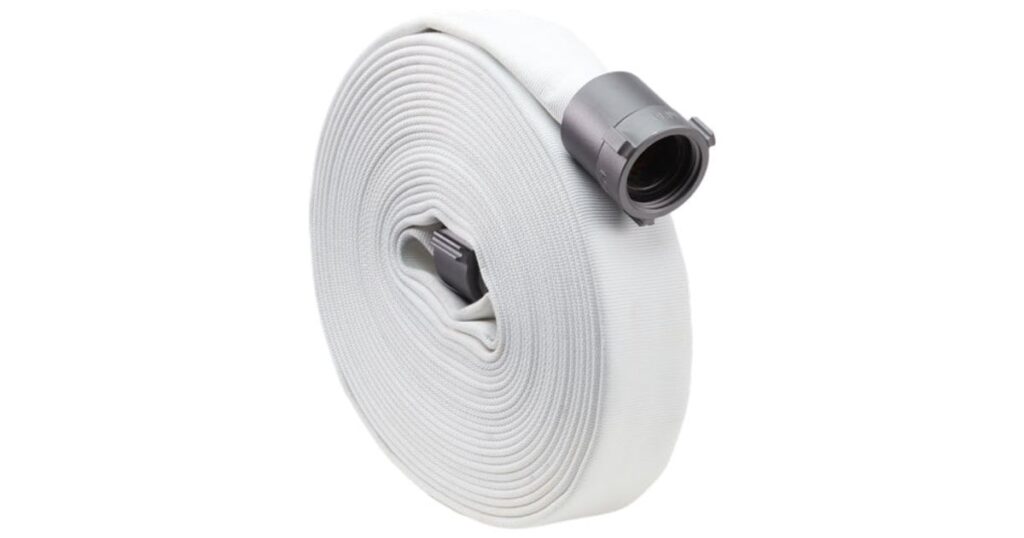
Firefighters connect multiple hose sections when battling blazes, and each standard section measures exactly 50 feet. This standardization lets crews quickly calculate how much hose they need based on distance from the truck to the fire.
The 50-foot length hits a sweet spot: long enough to reach building entrances from street hydrants, but manageable enough for firefighters to carry, connect, and deploy under pressure. Fire departments stock hundreds of these sections, building their water supply line 50 feet at a time during emergencies.
4. Coast Guard Patrol Boat (Small)

A Coast Guard Defender-class boat stretches about 50 feet from bow to stern, according to U.S. Coast Guard vessel specifications—just the right size to chase fast vessels, handle rough waves, and still turn sharply near docks. You’ll spot these patrol boats guarding harbors and rushing out on rescue calls—they’re the Coast Guard’s go-to workhorses.
Related: How Long Is 100 Feet? 13 Common Comparisons That Are 100 Feet Long
5. Small Commercial Fishing Trawler
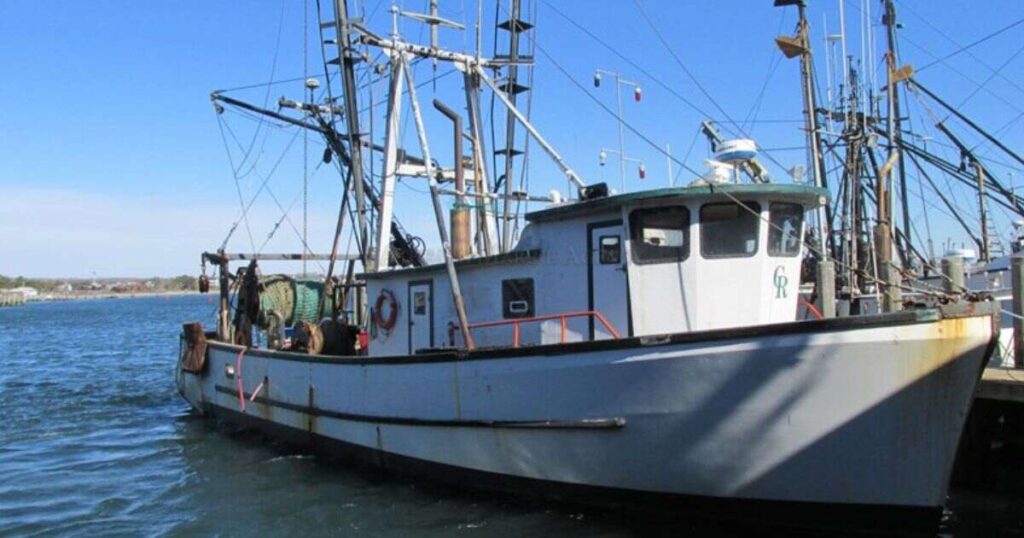
Visit any working fishing port and you’ll spot commercial trawlers around 50 feet long. Walk along a fishing dock, and you’ll see 50-foot trawlers lined up—each one built for long days, heavy catches, and family crews. Deck space accommodates fishing gear, a small crew, ice storage for the catch, and a wheelhouse for navigation. The 50-foot design balances seaworthiness with operational costs. Many independent fishermen rely on boats this size to make their living from the ocean.
If you’ve eaten locally-caught seafood, it likely came from a vessel close to this length. That’s 50 feet of working boat putting food on tables.
6. Helicopter Rotor Diameter

Medium-lift military and heavy-duty commercial transport helicopters—like the Sikorsky S-61—have main rotor diameters spanning about 50 feet. This means from one blade tip, across the center mast, to the opposite blade tip measures 50 feet.
The huge spinning blades of a helicopter create enough lift to carry people, rescue teams, and tons of gear high above the ground. The 50-foot diameter creates enough airflow and downward thrust to keep these large aircraft airborne. Standing beneath one on the ground, you’d see blades extending 25 feet in each direction—a spinning circle of precision engineering.
7. Outdoor Movie Screen
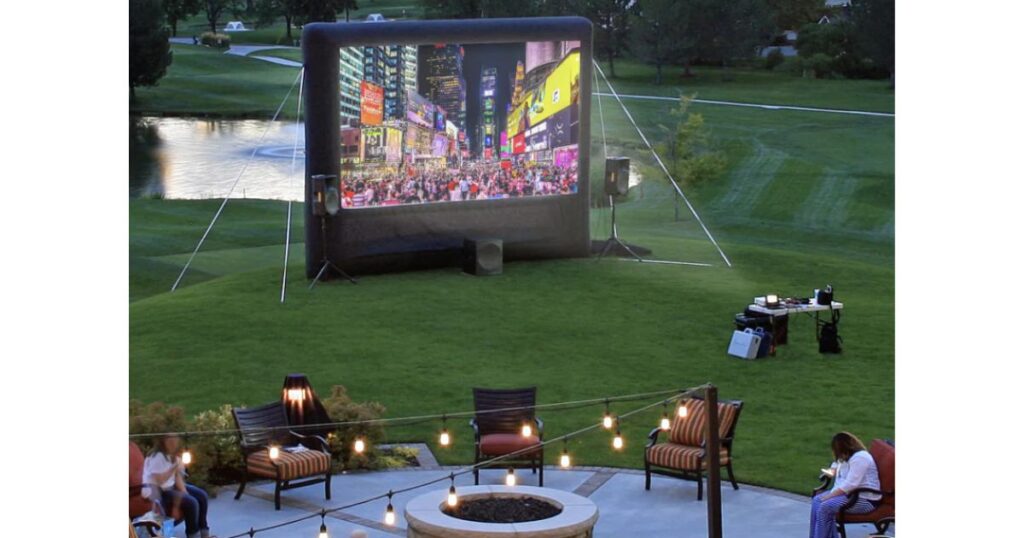
Mid-sized drive-in movie theaters install screens about 50 feet wide. This creates clear visibility from dozens of parked cars arranged in front of the screen. Modern outdoor venues for concerts and sporting events deploy similar dimensions for jumbotrons and projection surfaces.
The width matters because audiences spread across a wide viewing area. A 50-foot screen ensures people parked at angles can still see clearly. Some larger drive-ins go wider, but this size became standard for venues serving 100-300 cars.
8. Residential Street Width (Curb-to-Curb)
Many newer suburban developments feature two-lane residential streets measuring approximately 50 feet from curb to curb. This width accounts for two driving lanes plus parking space on both sides. City planners settled on this dimension because it allows comfortable two-way traffic flow while leaving room for parked vehicles.
Walk across your neighborhood street and count your steps. You’re likely crossing right around 50 feet of asphalt—a measurement so common in residential planning that most people never think about it.
9. Depth of a Shallow Well
In regions with high water tables, residential water wells often reach down about 50 feet to tap into reliable groundwater, as reported by the U.S. Environmental Protection Agency. This depth hits underground aquifers in many areas without the massive drilling costs of deeper wells that might go 200-300 feet down.
Homeowners in rural areas depend on these wells for drinking water, irrigation, and household needs. The 50-foot depth stays productive through seasonal changes while keeping drilling and pump maintenance affordable. Beneath your feet right now, water sits 50 feet down in many locations—the same length as a fire hose, just vertical.
10. Indoor Batting Cage
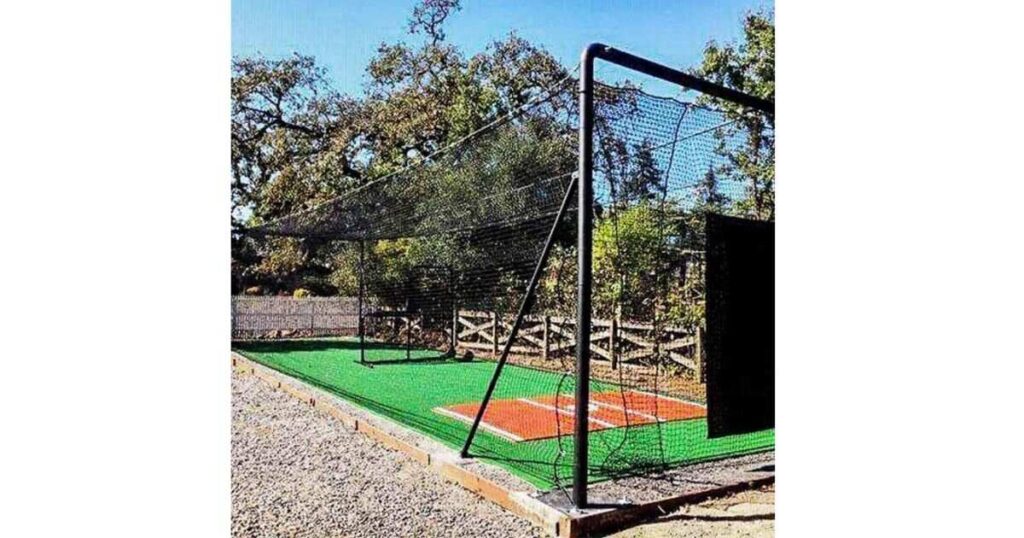
Full-sized indoor baseball and softball batting cages use 50-foot net systems. This length gives batters room to see the pitch, take a full swing, and follow through while keeping the ball contained. Sports facilities choose this dimension because it simulates real game distances without requiring massive building space.
Pitching machines set up at regulation distances, and the 50-foot cage length prevents balls from slamming into the back net too quickly. Training centers across the country use this standard—if you’ve ever taken indoor batting practice, you were swinging in a 50-foot cage.
11. Length of a Small Retail Store
Strip mall retail units typically run 50 feet deep from storefront to back wall. This became a construction standard because it maximizes usable retail space while keeping building costs reasonable. Store owners utilize every foot: customer displays up front, product shelving through the middle, and storage plus office space at the rear.
Walk into a small independent shop or chain store in a strip center. That feeling of depth as you move from entrance to back? You’re experiencing 50 feet of deliberately designed retail space.
Read Also: 13 Common Things That Are 4 Inches Long
Practical Ways to Measure 50 Feet Without Tools
The Walking Method
Your natural stride averages 2.5 feet for most adults. Count off 20 normal steps—no need to exaggerate or tiptoe. Twenty steps gets you to 50 feet. I use this trick whenever I’m laying out garden beds or checking driveway space—it’s a simple way to “see” the distance without a tape measure.
The Vehicle Trick
Most sedans measure 14-16 feet long. Park three cars bumper-to-bumper with minimal gaps. You’ve just created a 45-48 foot reference line—close enough for visualization. Trucks run 18-20 feet, so three pickups will overshoot slightly but still give you the general idea.
Garden Hose Hack
Standard residential garden hoses come in 25-foot, 50-foot, and 100-foot lengths. If you own a 50-footer, stretch it completely flat. There’s your measurement tool. Many extension cords also come in 50-foot versions—check your garage.
The Parking Space Guide
Standard parking spaces run 18-19 feet long. Line up three spaces mentally (you get 54-57 feet), but subtract a bit for accuracy. Two and a half parking spaces is almost exactly 50 feet.
Using Your House
Single-story homes typically span 40-60 feet in width. Stand at one corner and look across to the opposite corner. If your house is average-sized, you’re seeing something very close to 50 feet. Measure it once, and you’ll have a permanent reference.
Real-World Applications of 50-Foot Measurements
Home Fencing Projects Installing a fence? Most residential lots have backyards where one side measures 50-60 feet. Knowing this helps you calculate materials. A 50-foot run needs 17 fence panels (at 3 feet each) or 10 sections (at 5 feet each). Add 10% extra for mistakes and you’re set. I’ve made the mistake of under-measuring before—learning to picture 50 feet saved me from buying the wrong amount of supplies.
DIY Landscaping Planning a garden bed that runs along your house? Measure once—if it’s 50 feet, you know exactly how much edging material, mulch, and plants you need. A 50-foot bed at 3 feet wide requires 150 square feet of coverage. That’s about 4 cubic yards of mulch at standard depth.
Cable and Wire Installation Running internet cable, outdoor lighting, or speaker wire? Buy in 50-foot increments. It’s easier to manage than 100-foot spools, and you avoid massive leftover coils. Electricians and low-voltage installers stock 50-foot runs as standard working lengths.
Event Planning Setting up for a backyard party? A 50-foot string of lights covers most residential fences. Tent companies use 50-foot measurements for layout planning—it’s a standard reference for spacing tables, stages, and serving areas.
Sports Practice Coaches use 50-foot cones for sprint drills, passing exercises, and agility training. It’s half a regulation field width in many sports, making it perfect for shuttle runs and conditioning work. Mark it once with chalk or cones, and you’ve got a reusable training setup.
How 50 Feet Compares to Other Distances
Shorter Than You Think A football field runs 300 feet (100 yards), making 50 feet just one-sixth of the field. It’s also about half a basketball court, which measures 94 feet long. So while 50 feet feels substantial up close, it’s relatively short in sports contexts.
Longer Than Most Rooms Average living rooms span 12-16 feet long. Your 50-foot measurement equals 3-4 living rooms placed end-to-end. Master bedrooms run 12-14 feet, so we’re talking about nearly four bedrooms lined up.
Vertical vs. Horizontal As a height measurement, 50 feet equals a 4-5 story building (assuming 10 feet per floor). Looking up at 50 feet feels much more dramatic than walking 50 feet horizontally—funny how perspective changes perception.
FAQs About 50 Feet
How many meters is 50 feet?
15.24 meters. If you’re working in metric, think of it as just over 15 meters—roughly the length of a city bus or three mid-sized cars.
What common objects measure 50 feet?
Railroad boxcars (interior), fire truck aerial ladders, sections of fire hose, small Coast Guard patrol boats, commercial fishing trawlers, helicopter rotor diameters, drive-in movie screens, and indoor batting cages all hit this measurement.
How long does walking 50 feet take?
About 11 seconds at average walking speed (3 mph). If you’re moving briskly, you’ll cover it in 7-8 seconds. Running at a jog takes roughly 4-5 seconds.
Can I measure 50 feet with my phone?
Yes. Download a measurement app that uses your camera and augmented reality. Walk from starting point to end point while your phone tracks distance. Apps like Measure (iPhone) or Google Measure (Android) work for rough estimates, though accuracy varies.
What’s bigger: 50 feet or 50 yards?
50 yards is three times longer. Since 1 yard equals 3 feet, 50 yards converts to 150 feet—triple what we’re discussing here.
How deep is 50 feet in a pool?
Extremely deep. Most residential pools max out at 8-10 feet in the deep end. Commercial diving pools might reach 12-15 feet. A 50-foot deep pool would be exceptional—you’re thinking of well depth, not swimming pools. Olympic pools are 50 meters long (164 feet), but only about 6-10 feet deep.
Is 50 feet enough for a driveway?
Depends on your property. A straight driveway from street to garage typically runs 30-75 feet depending on setback requirements. 50 feet works for many suburban lots but might fall short for properties with deep setbacks or curved driveways.
Wrapping Up
50 feet shows up everywhere once you start looking—from the fire truck racing past your house to the batting cage where your kid practices, from the street width you cross daily to the well bringing water to rural homes.
I started noticing this measurement in daily life, and now it’s easy to guess sizes or distances without even checking a tape measure. It’s a measurement that bridges the gap between small-scale (like room dimensions) and large-scale (like athletic fields).
Knowing how to visualize and measure this distance helps you make better decisions about home projects, understand spatial requirements, and appreciate the engineering behind everyday infrastructure. The 11 examples we covered give you permanent reference points—objects you can spot in your community and use for quick comparisons.
Walk 20 steps right now. That’s 50 feet. Simple as that.
Fact Check & Sources:
All measurements and examples in this article were double-checked using data from the U.S. National Institute of Standards and Technology (NIST) and standard engineering guides to make sure everything is accurate and reliable.

I am the editor and author of StoriesRadius.com, a blog about measurements and dimensions. I enjoy turning numbers and sizes into simple stories that anyone can understand. From everyday objects to curious facts, I share clear guides based on real research and experience. My goal is to make learning about length, height, and size fun, useful, and easy for all readers.
